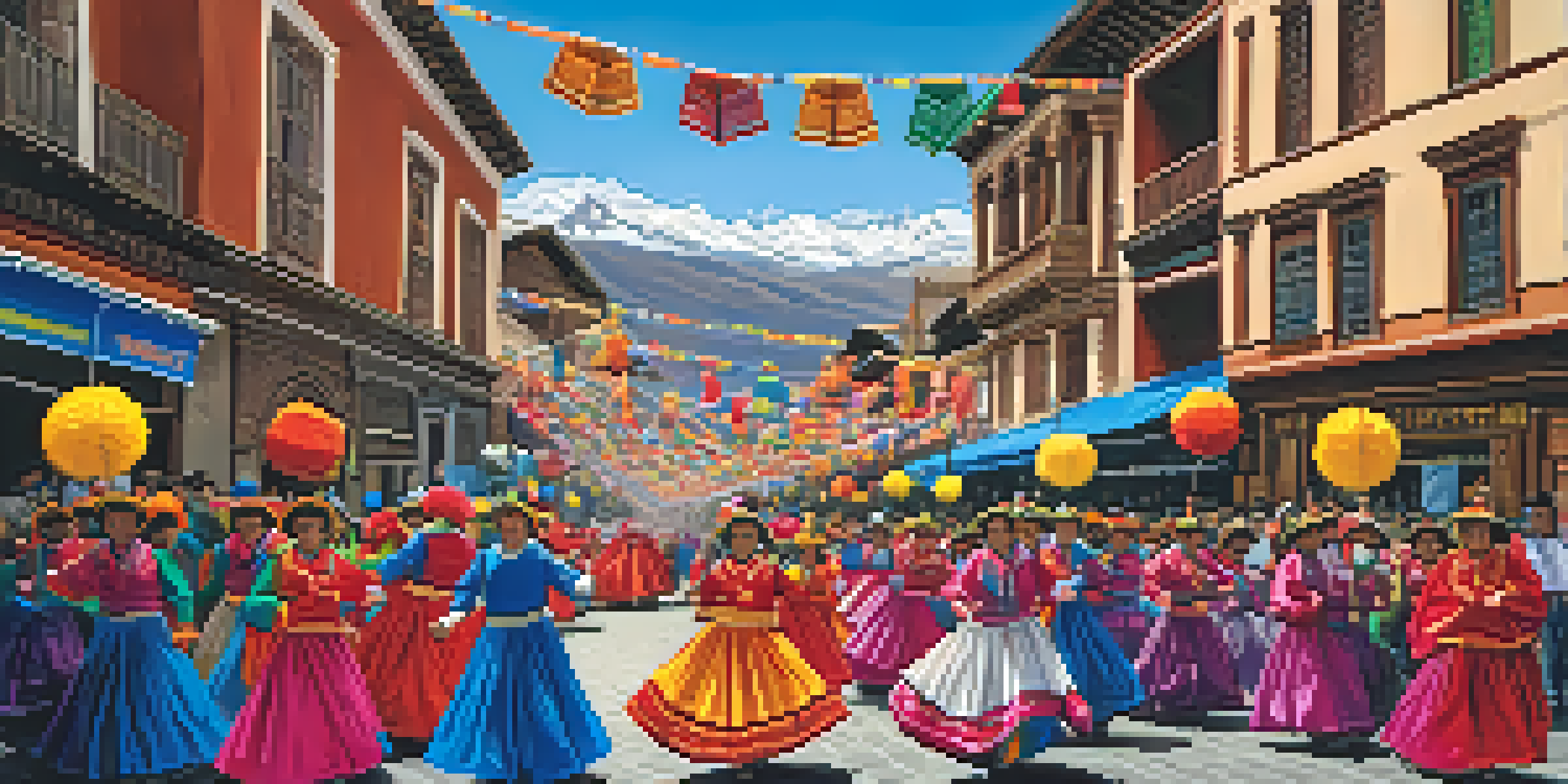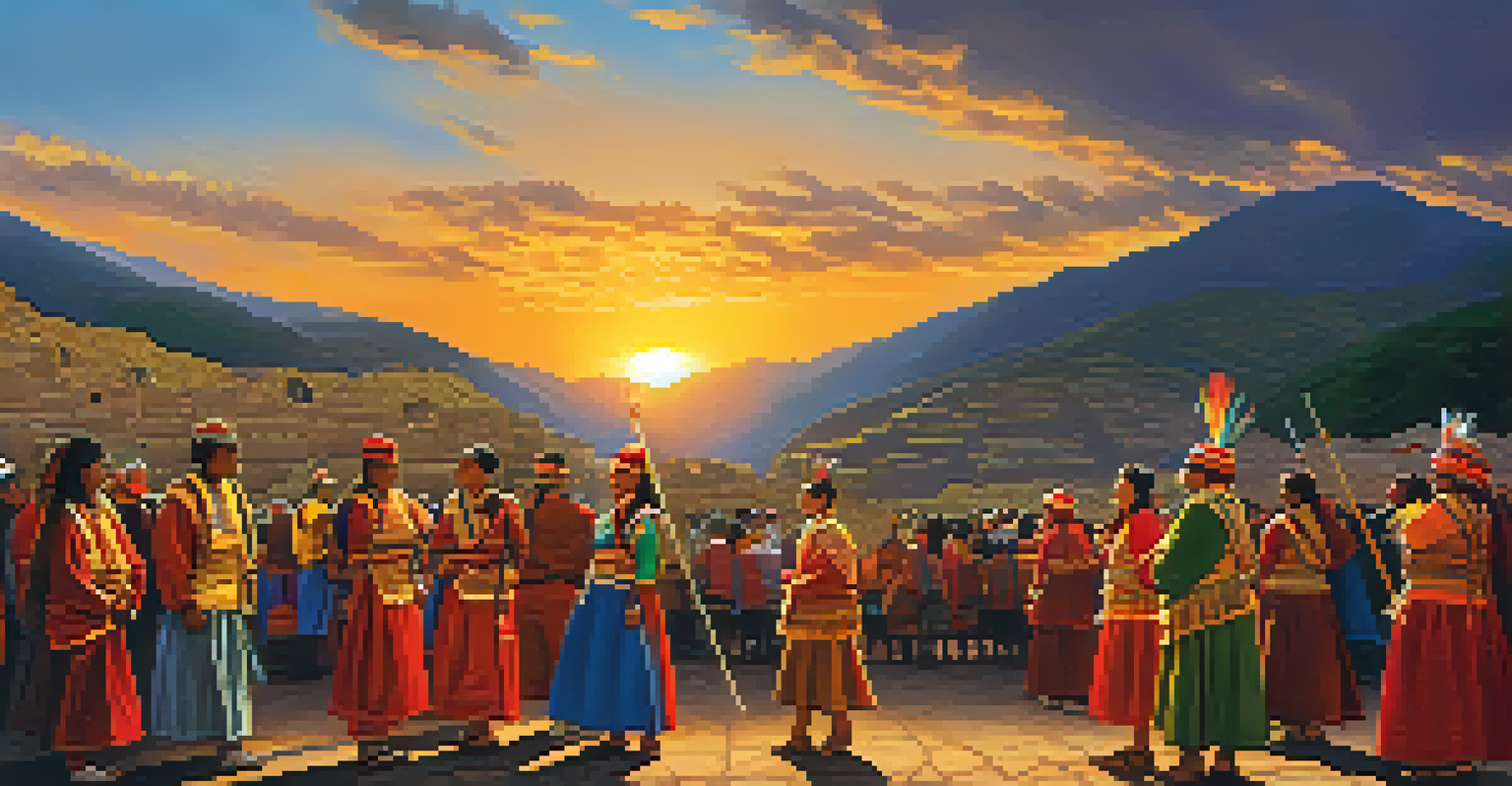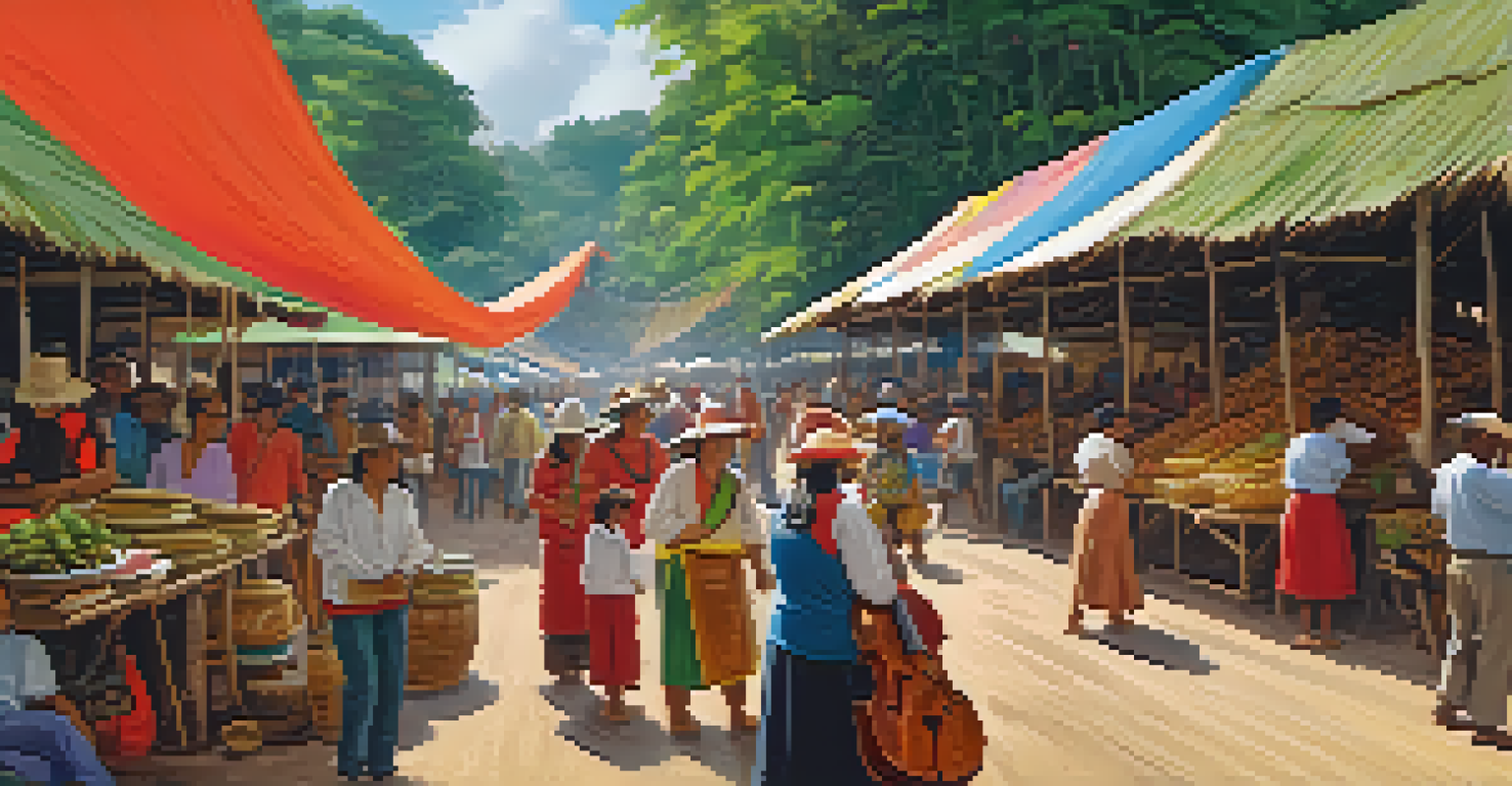The Significance of Religious Festivals in Peru's Culture

Religious Festivals: A Window into Peru's Rich Heritage
Religious festivals in Peru are more than just celebrations; they are a vibrant tapestry woven from the country’s rich history and diverse cultures. They reflect the blend of Indigenous traditions and Spanish colonial influences, creating a unique cultural identity. These festivals offer a glimpse into the values and beliefs that have shaped Peruvian society over centuries, providing a sense of belonging and continuity.
Festivals are a time for people to come together, to share traditions, and to strengthen their community bonds.
For instance, during the Feast of the Virgin of Candelaria in Puno, locals showcase colorful dances and traditional music that narrate their ancestral stories. This festival not only honors the Virgin Mary but also serves as a reminder of the Indigenous roots that are still alive today. It's an exciting spectacle that invites both locals and tourists to partake in the shared heritage.
Thus, these festivals act as cultural landmarks, helping to preserve ancient customs while embracing modern influences. The lively atmosphere, filled with music, dance, and spirituality, creates a sense of community that resonates deeply with participants and onlookers alike.
The Role of Community in Celebrating Festivals
In Peru, festivals are often community-driven events that bring people together, fostering a strong sense of unity and belonging. Families, friends, and neighbors come together to organize these celebrations, reflecting the importance of collaboration in Peruvian culture. Through shared preparations and participation, individuals strengthen their bonds and create lasting memories.

Take the Inti Raymi, the Festival of the Sun, as an example. Celebrated in Cusco, this festival is a reenactment of Inca rituals that honors the sun god. Locals dress in traditional attire, gather in the Sacsayhuamán ruins, and perform ancient ceremonies, showcasing not just their heritage but also their collective spirit.
Cultural Heritage through Festivals
Peru's religious festivals are a vibrant blend of Indigenous traditions and Spanish influences, showcasing the country's rich cultural identity.
This communal involvement transforms religious festivals into a powerful expression of identity, where everyone plays a role in sustaining cultural practices. It’s a beautiful reminder that, while the festivals celebrate spiritual beliefs, they also nurture human connections.
Spiritual Significance: Faith and Tradition Intertwined
At the heart of Peru's religious festivals lies a deep spiritual significance that resonates with many Peruvians. These events serve as opportunities for individuals to express their faith, seek blessings, and renew their spiritual commitments. From the vibrant processions to the earnest prayers, every aspect is imbued with meaning.
Culture is the widening of the mind and of the spirit.
For example, during Semana Santa (Holy Week), the streets are adorned with intricate carpets of flowers and colored sawdust, leading to solemn processions that depict the Passion of Christ. This combination of artistic expression and devotion illustrates how faith is interwoven into the daily lives of the people.
Such celebrations remind participants of their spiritual roots and the importance of community in their faith journeys. They reinforce shared beliefs and provide a space for reflection, gratitude, and hope, deepening the connection between individuals and their spirituality.
Economic Impact: Festivals as Catalysts for Local Growth
Religious festivals in Peru are not only culturally significant but also economically beneficial. They attract thousands of tourists each year, providing a boost to local economies through hospitality, crafts, and food industries. This influx of visitors creates job opportunities and enables local artisans to showcase their work.
For instance, during the Festival of San Juan, celebrated in the Amazon region, the local economy thrives as tourists flock to experience the unique cultural offerings. From traditional food stalls to craft markets, the festival becomes a vibrant hub of activity that supports local livelihoods.
Community Bonds Reinforced
These festivals foster unity as families and friends come together to celebrate, reinforcing community ties and shared memories.
By promoting local traditions and artisanship, these festivals help preserve cultural heritage while fostering economic sustainability. This interplay between culture and economy highlights how religious festivals go beyond mere celebrations; they are vital threads in the fabric of community life.
Cultural Exchange: Festivals as Bridges Between People
Peru's religious festivals serve as platforms for cultural exchange, welcoming people from diverse backgrounds to come together in celebration. As tourists participate in these events, they experience firsthand the rich traditions and customs that define Peruvian culture. This exchange fosters understanding and appreciation among different cultures.
For example, the Corpus Christi festival in Cusco involves not just locals but visitors who join in the colorful parades and vibrant dances. This shared experience allows tourists to connect with the community on a deeper level, breaking down barriers and building friendships.
In this way, festivals become a melting pot of cultures, where stories are shared, and new connections are forged. This cultural exchange enriches both locals and visitors, promoting a sense of global community and mutual respect.
Challenges Facing Traditional Festivals Today
Despite their significance, traditional religious festivals in Peru face various challenges in the modern world. Urbanization, globalization, and changing social dynamics can threaten the authenticity and continuity of these cherished traditions. As younger generations gravitate towards modern lifestyles, the risk of losing cultural heritage becomes more pronounced.
For instance, some festivals may struggle to attract participants, leading to a decline in traditional practices and rituals. This shift can result in a disconnection from ancestral roots, as the younger population may not fully engage with their cultural heritage.
Economic Growth from Celebrations
Religious festivals not only celebrate cultural heritage but also stimulate local economies by attracting tourists and supporting artisans.
Addressing these challenges requires a concerted effort to revitalize interest and participation in traditional celebrations. Community leaders, educators, and families can play pivotal roles in ensuring that the essence of these festivals is preserved for future generations.
The Future of Religious Festivals in Peru
Looking ahead, the future of religious festivals in Peru hinges on a delicate balance between preserving tradition and embracing change. As communities adapt to modern influences, there is an opportunity to innovate while staying true to their roots. This evolution could involve incorporating contemporary elements that resonate with younger audiences, ensuring relevance in a rapidly changing world.
For example, festivals could leverage digital platforms for promotion and participation, allowing broader engagement while maintaining cultural authenticity. By creating hybrid experiences that blend tradition with modernity, these festivals can continue to thrive.

Ultimately, the future of religious festivals in Peru is bright, as long as there’s a commitment to nurture and celebrate these integral parts of cultural identity. By fostering a sense of pride in their heritage, communities can ensure that these vibrant celebrations endure for generations to come.